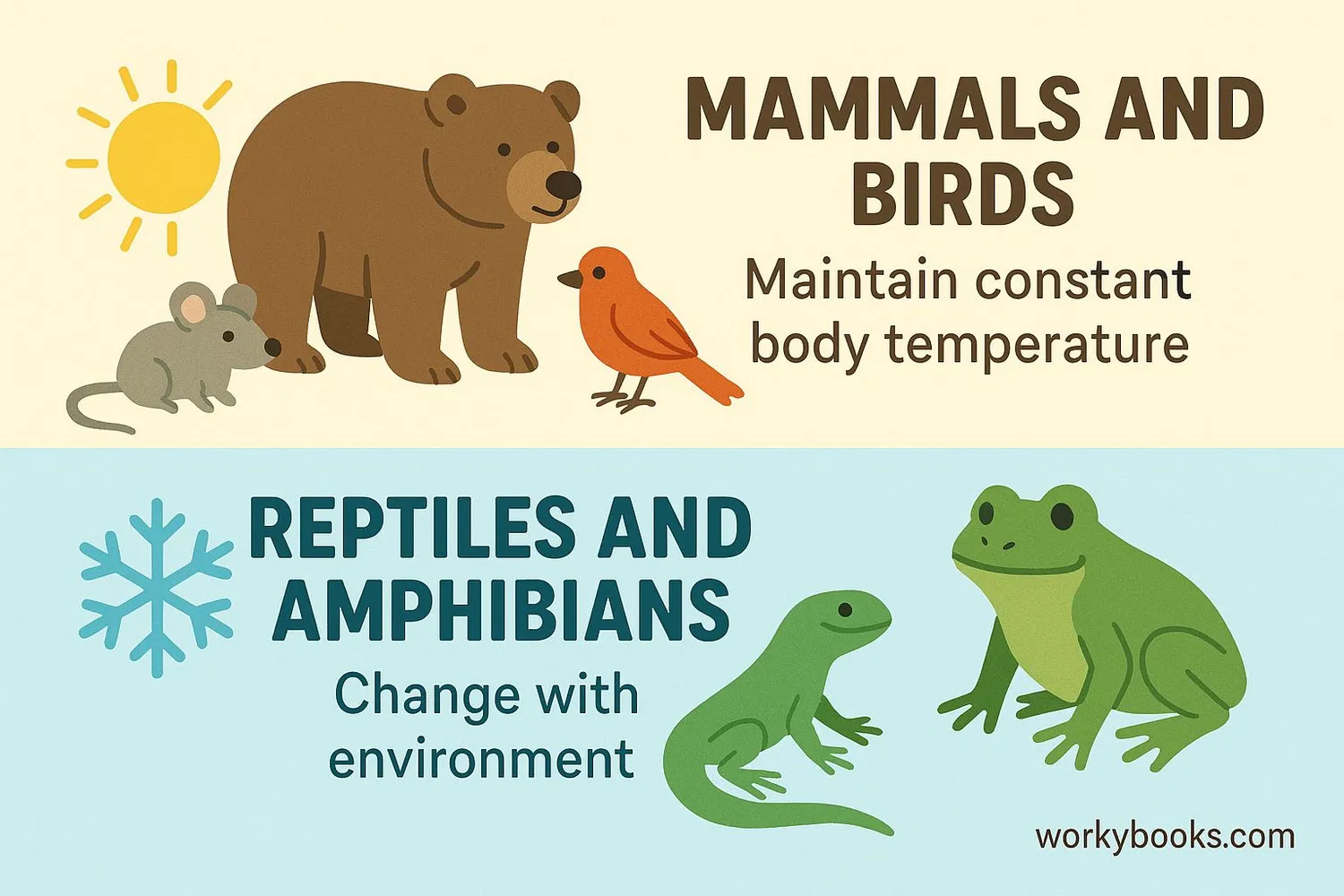Endotherms - Definition, Examples, Quiz, FAQ, Trivia
Discover how mammals and birds maintain their body temperature through internal heat generation
What is an Endotherm?

An endotherm is an animal that can generate its own body heat to maintain a constant internal temperature, regardless of the environment. These animals are often called "warm-blooded" and include all mammals and birds.
Unlike ectotherms (cold-blooded animals like reptiles) that rely on external heat sources, endotherms produce heat internally through their metabolism. This allows them to stay active in various environments and temperatures.
Key Characteristics of Endotherms
• Maintain constant body temperature • High metabolic rate • Generate internal heat • Insulation (fur, feathers, fat) • Found in diverse environments
Examples of Endothermic Animals
Mammals
Humans, dogs, cats, whales, elephants, and bats
Birds
Eagles, penguins, sparrows, owls, and hummingbirds
How Thermoregulation Works

Endotherms maintain their body temperature through a process called thermoregulation. This involves balancing heat production and heat loss through various physiological mechanisms.
Metabolic Heat
Food is converted to energy, producing heat as a byproduct
Insulation
Fur, feathers, and fat layers reduce heat loss
Shivering
Muscle contractions generate heat when cold
Sweating/Panting
Evaporative cooling when too warm
Blood Flow
Changing blood flow to skin regulates heat loss
The hypothalamus in the brain acts as the body's thermostat, constantly monitoring temperature and triggering responses to maintain the ideal internal environment. This requires a lot of energy, which is why endotherms need to eat more frequently than ectotherms of similar size.
Importance of Being Warm-Blooded

Being endothermic provides significant advantages that have allowed mammals and birds to colonize diverse habitats across the planet:
Environmental Flexibility
Can live in cold climates and remain active year-round
Nocturnal Activity
Can be active at night when temperatures drop
Sustained Activity
Can maintain prolonged physical and mental activity
These advantages come with costs too. Endotherms need to consume much more food than ectotherms of similar size to fuel their high metabolic rates. A mouse eats about half its body weight daily, while a lizard of similar size might eat once a week!
Evolutionary Success
The ability to maintain constant body temperature has contributed to the evolutionary success of mammals and birds, allowing them to inhabit nearly every ecosystem on Earth.
Endotherm Quiz
Test your knowledge about endotherms with this quiz. Answer all 5 questions to see how much you've learned.
Frequently Asked Questions
Here are answers to common questions about endotherms:
Interesting Endotherm Facts
Discover some amazing facts about warm-blooded animals!
Metabolic Marvel
The tiny shrew has the highest metabolic rate of any mammal. It must eat every 2-3 hours to survive and may consume 2-3 times its body weight in food each day!
Temperature Extremes
Arctic foxes can maintain a constant body temperature even when outside temperatures drop to -50°C (-58°F), thanks to their incredibly thick fur and compact body shape.
Bird Warmth
Some hummingbirds enter a state called torpor at night, lowering their body temperature and metabolic rate dramatically to conserve energy until morning.
Evolutionary Advantage
The evolution of endothermy allowed mammals to become nocturnal, avoiding competition with dinosaurs that were mostly active during the day.


